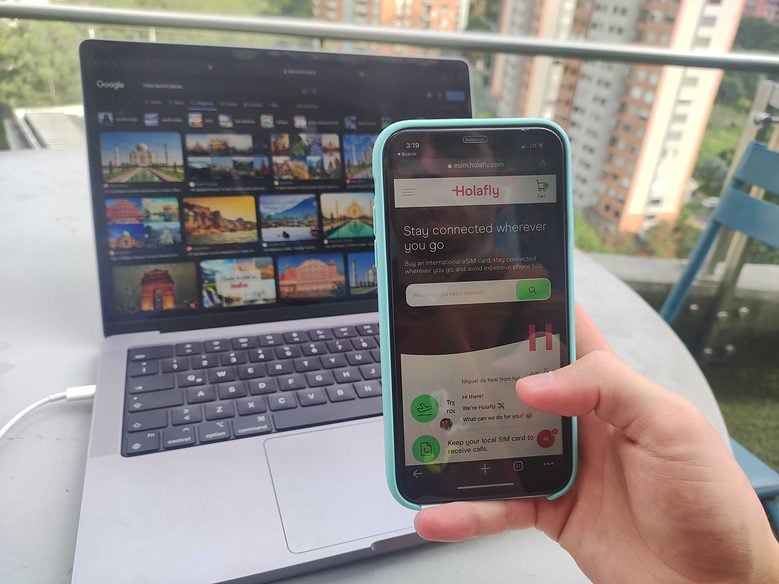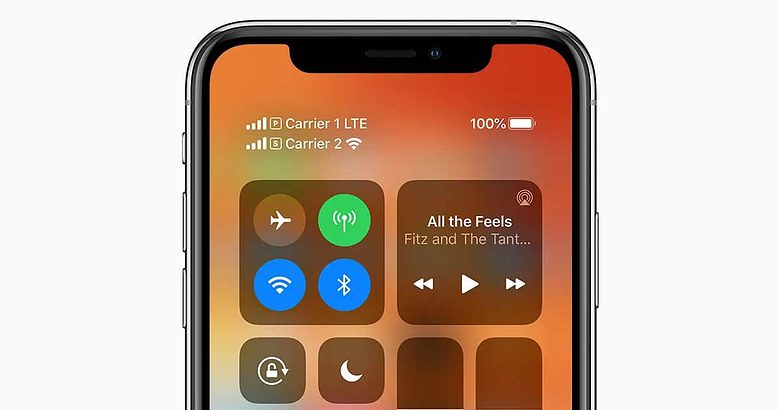Can you imagine switching to another cellular provider for your smartphone without having to go to a shop or wait for your physical SIM card to be shipped? Or traveling abroad knowing your phone will work and you won’t face data-roaming charges? Or using the same phone number on your smartphone, watch, car and even your refrigerator?
Everything you need to know about eSIM
This article will tell you all about eSIM, a new technology making a big splash all over the world with smartphones like iPhone and other devices.
You’ll find out what eSIM is, how international eSIM use is growing across an expanding array of devices, and what the technology’s advantages and disadvantages are compared to traditional cellphone SIM cards.
The article also will help you figure out if your smartphone is compatible with eSIM and guide you in picking an eSIM provider.
The growth of international eSIM on a variety of devices

Photo: Holafly
eSIM is a digital microchip version of the traditional SIM card that slides into the tiny tray that pops out on the side of your smartphone or other devices. eSIMs are found in various products, including smartphones, wearables, home appliances, cars and other items that are always connected to the internet.
But eSIM is not a physical card. That means you don’t have to go to a store to have it installed, or receive it via shipping to install it yourself. eSIM works immediately, as soon as it’s activated over the air.
Over the years, SIM cards shrank down to a tiny size to fit in almost any cellphone — but eSIM takes up even less space and stores more information. The integrated chip on an eSIM-compatible phone is smaller than the latest plastic nano-SIM cards and allows up to 20 “eSIM profiles” with different phone numbers and data plans.
And better yet, you can make eSIM profiles and easily switch between them for different uses. For example, you could add free roaming to a profile for a country where you’re planning to travel. Adding the Holafly eSIM as a new profile, you will get data coverage in more than 130 countries. Also, you can keep the SIM provider from your country of origin and another provider that will provide you data, even unlimited data on your trips. If you love to know how much data you are really using in your trips, and more info about it, you can download the Holafly app, and you will get all the numbers in real time.
How is eSIM different from traditional SIM cards?
An eSIM is like a traditional SIM card — but without the little piece of plastic. Let’s look at the advantages and disadvantages eSIM has over old-school SIM cards.
eSIM advantages
- No need to manipulate a physical plastic SIM card.
- No worries about losing or damaging a physical SIM card.
- Some cellular devices, including iPhone, allow you to have up to 20 eSIM profiles with different phone numbers and data plans.
- You can recover your data even if you lose your device.
- You can travel in other countries and stay connected while avoiding roaming costs.
- No delivery costs.
- No plastic chip is better for the environment.
eSIM disadvantages
- You can move a SIM card from one device to another if necessary, but not eSIM.
- eSIM is not compatible with all smartphones or provider networks (yet). For more info, see lists of eSIM-compatible devices and eSIM providers.
Which smartphones are currently compatible with eSIM?

Photo: Holafly
The list of smartphones and other devices supporting eSIM has grown rapidly, and continues to expand as the technology replaces SIM cards and becomes standard. All recent iPhone models and several iPads models support it, for example, in addition to many Android devices.
You can use eSIM with iPhone XR through iPhone 14 series handsets. (In fact, iPhone 14 models sold in the United States do not support physical SIM cards.) And with iPhone 13 and 14 models, you can have two eSIMs running simultaneously. Several iPad models with 4G cellular networking also work with eSIM.
For a full list of compatible devices, including iPhones, iPad, and devices from makers like Samsung and Google, click here.
What’s the best company offering eSIM?
Many major international network carriers offer eSIM services. Some even offer dual eSIM support for compatible devices.
Well-known U.S. carriers that offer eSIM services include AT&T, Verizon and T-Mobile. Internationally, Orange was among the first to offer eSIM. Major provider Vodafone and the smaller O2 added eSIM offerings later.
As for taking advantage of eSIM for the huge benefit of international travel without roaming fees, one company to consider is Holafly. As an international eSIM shop, it offers digital eSIM data coverage in more than 130 countries, and unlimited data plans in more than 45.
To use a Holafly eSIM, all you need to do is scan a QR code during the quick setup process, which will help you make sure your device is compatible.
Here is a quick guide:
Conclusion
Over time, the good ol’ SIM card has gotten smaller and smaller. But it has remained a physical card, which can be a bit of a hassle. As eSIM gains more and more traction all over the world, with more cellular carriers and devices covered, it is replacing the traditional SIM card.
If eSIM works on your device, you might give it a try. It could help you be more organized with your iPhone, and also take care of those data problems while away from home.


